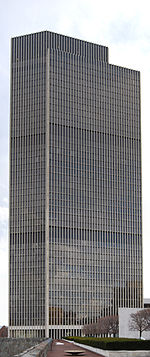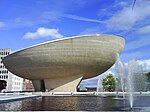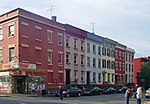New York State Executive Mansion
Government buildings on the National Register of Historic Places in New York (state)Governor of New York (state)Governors' mansions in the United StatesHistoric house museums in New York (state)Houses completed in 1856 ... and 4 more
Houses in Albany County, New YorkHouses on the National Register of Historic Places in New York (state)Museums in Albany, New YorkNational Register of Historic Places in Albany, New York

The New York State Executive Mansion is the official residence of the governor of New York. Located at 138 Eagle Street in Albany, New York, it has housed governors and their families since 1875.
Excerpt from the Wikipedia article New York State Executive Mansion (License: CC BY-SA 3.0, Authors, Images).New York State Executive Mansion
Myrtle Avenue, City of Albany
Geographical coordinates (GPS) Address Nearby Places Show on map
Geographical coordinates (GPS)
| Latitude | Longitude |
|---|---|
| N 42.646666666667 ° | E -73.761388888889 ° |
Address
Myrtle Avenue
12202 City of Albany
New York, United States
Open on Google Maps








